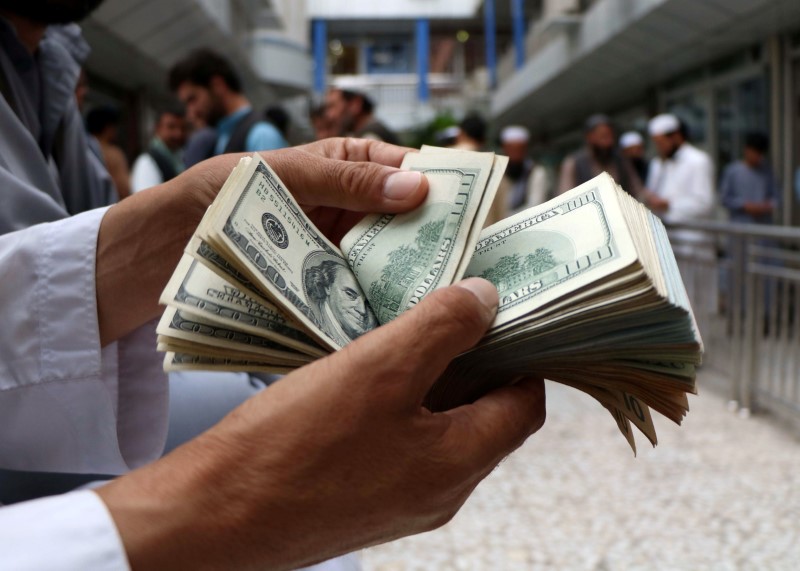By Gina Lee
Investing.com – The dollar was up on Thursday morning in Asia, with investors adjusting earlier bullish expectations for a COVID-19 vaccine. This adjustment tempered the risk assets rally triggered by the vaccine expectations while maintaining enough confidence to support the greenback against other safe-haven assets.
The U.S. Dollar Index Futures that tracks the greenback against a basket of other currencies inched up 0.01% to 92.972 by 10:10 PM ET (2:10 AM GMT). Pfizer Inc's (NYSE:PFE) announcement of positive results for the vaccine candidate that it is co-developing with BioNTech Se (F:22UAy) earlier in the week saw the dollar fall more than 10% from a March peak to a 10-week low. A selloff of safe-haven assets since then boosted the dollar’s nearly-1% rally to just below the one-week high hit during the previous session.
However, a sharp decline in U.S. bond yields, as well as the Federal Reserve’s policy of an extended period of low rates and hopes for a global economic recovery from COVID-19 that would boost other currencies could contribute to further decline in the dollar.
This means that new drivers might now need to be sought to prevent the dollar falling any lower, OCBC strategist Terence Wu said in a note.
“With the broad dollar in a consolidative mode, the posture for the USD/CNH pair may also be sideways in the near-term. These factors play into limited downside for USD-Asian pairs in the near-term,” the note added.
Other investors espoused a more optimistic view.
“I think we had a speculative market that was increasingly comfortable being short U.S. dollars. Then we had the vaccine news and a big spike in U.S. bond yields, which I think just acted as a little bit of a check on unbridled U.S. dollar bearishness. A lot of positions probably got squeezed. I think it was a condition of the market rather than a strong fundamental response or a change of thinking about the dollar,” National Australia Bank (OTC:NABZY) head of foreign exchange strategy Ray Attril told Reuters.
The USD/JPY pair edged down 0.13% to 105.28. The yen was around 2% below the eight-month high it saw against the dollar during the previous week, after U.S. president-elect Joe Biden took the lead in the presidential election, spurring a dollar sell-off.
The USD/CNY edged down 0.17% to 6.6190. Tensions between the U.S. and China rose over the National People’s Congress Standing Committee (NPCSC)’s Wednesday resolution disqualifying any lawmakers in Hong Kong's Legislative Council deemed insufficiently patriotic without going through the city’s courts. The immediate removal of four opposition legislators triggered the resignation of the fifteen remaining opposition legislators later in the day. National Security Advisor Robert O’Brien warned that the U.S. would “continue to utilize all the powers granted” under various laws and “identify and sanction those responsible for extinguishing Hong Kong’s freedom.”
The NZD/USD pair was up 0.23% to 0.6897. The NZD saw gains as the Reserve Bank of New Zealand (RBNZ) adjusted its “unconstrained” cash rate projection upwards due to a better-than-expected economic performance and tempering expectations of negative rates.
"Less stimulus is required than we thought in August, but still a substantial amount of stimulus," RBNZ Assistant Governor Christian Hawkesby told Bloomberg.
The AUD/USD pair inched up 0.05% to 0.7282. The AUD also saw a six-month low against the NZD after the RBNZ adjustment. “The pair looks heavy and at risk of further downside,” Pepperstone head of research Chris Weston told Reuters.
The GBP/USD pair inched down 0.02% to 1.3219, as Brexit trade talks between the U.K. and the European Union drag on.
